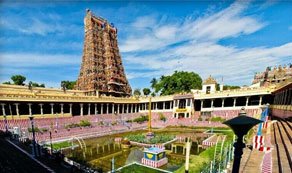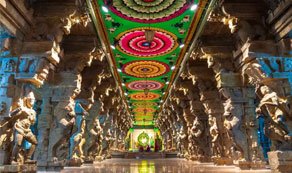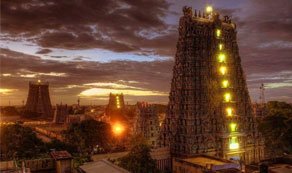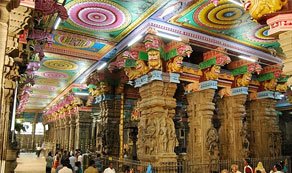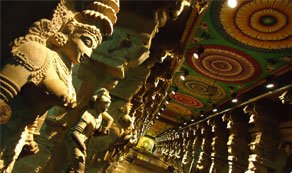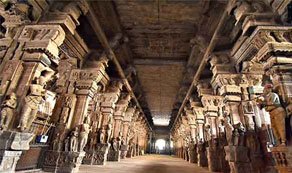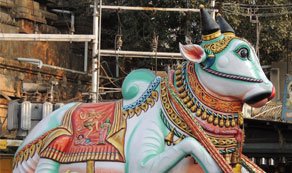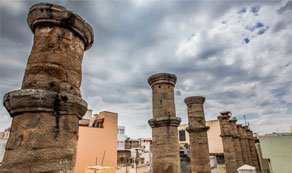Meenakshi Amman Temple

The temple underwent significant expansions and renovations over the centuries under various rulers, including the Nayak dynasty and later the British administration. Today, it stands as a magnificent example of Dravidian architecture and serves as a center for religious and cultural activities.
Here are some key points about the history and special features of the Meenakshi Amman Temple:
Founding and Early History:
The temple is believed to have been originally built around the 6th century AD. However, the current structure largely dates back to the 14th century, when it was expanded and renovated by the Nayak rulers.
Architecture:
The temple complex is sprawling and covers an area of about 45 acres, featuring numerous gopurams (tower gateways), mandapams (halls), and shrines dedicated to various deities. The intricate carvings, colorful sculptures, and towering gopurams are exemplary of Dravidian architecture.
Temple Specialties:
The plane above Sundaresvara was erected by Indra. He visited many places and worshiped in order to atone for the sin of killing Indra. Indra saw Swayambu Lingam in the Kadamba Forest, Madurai, where Lord Shiva performed Thiruvilayadal and attained liberation from sin.
Thus, Indra built a temple with Vimana here. Hence, it is now known as Indra Vimana.
Meenakshi and Sundareswarar:
The main deities of the temple are Goddess Meenakshi (an avatar of Parvati) and Lord Sundareswarar (an avatar of Lord Shiva). The wedding ceremony of Meenakshi and Sundareswarar, known as the "Meenakshi Thirukalyanam," is celebrated annually with great pomp and splendor.
Thousand Pillar Hall:
One of the notable features of the temple is the Thousand Pillar Hall, an ancient marvel known for its intricate sculptures and finely carved pillars. It serves as a venue for cultural events and festivals.
Golden Lotus Tank: Potamarai Pond:
At the request of Nandi and other gods, Isaan created this pond by striking the earth with his mace. It is also the place where Indra himself received the golden lotus for worship. This pond is also known as Sivagangai. One should bathe in this pool on auspicious days, including the new moon, eclipse period, and monthly birth, and visit the Lord by bathing. This is the 192nd temple out of 274 temples to have been sung by Devarpadal, which mesmerized Isaan. Similarly, it is mentioned as Rajamatangi Syamala Shakti Peedam among the 51 Shakti Peedams.
Nataraja, who changed legs:
Nataraja is on the right side as you enter the Swami sanctum. Unlike in other temples, he dances by lifting his right leg instead of his left leg. Rajasekara Pandyan studied dance in Madurai. When he visited Swami, he said, “Lord, I have struggled to learn dance. But from time to time, you sit on your right leg and swing with your left leg. "Shouldn't you sit down on your left leg, lift your right leg, and dance alternately?... If you don't do this, I will give up my life right here," he said. Accepting the king's request, Nataraja sat down on his lying leg, lifted his right leg, and blessed him. The seat of Nataraja is Villi Sabha, one of the Pancha Sabhas.
Vellaiyanai (White Elephant):
The Vellaiyanai (White Elephant) Shrine within the Meenakshi Amman Temple complex is dedicated to the sacred white elephant, which is said to have been bestowed upon Queen Kanchanamalai, the mother of Meenakshi, by the god Indra as a sign of divine approval of her child.
The white elephants are named Vamanan, Kumudhan, and Pushpathanthan .
Festivals:
The Meenakshi Temple hosts several festivals throughout the year, including the Meenakshi Thirukalyanam, Chithirai Thiruvizha, and Navaratri. These festivals attract devotees from all over the world and showcase the rich cultural heritage of Tamil Nadu.
Spiritual Significance:
The temple is not only a place of worship but also a symbol of Tamil culture, tradition, and spirituality. Devotees believe that worshipping Meenakshi Amman and Lord Sundareswarar brings prosperity, happiness, and fulfillment of desires.




